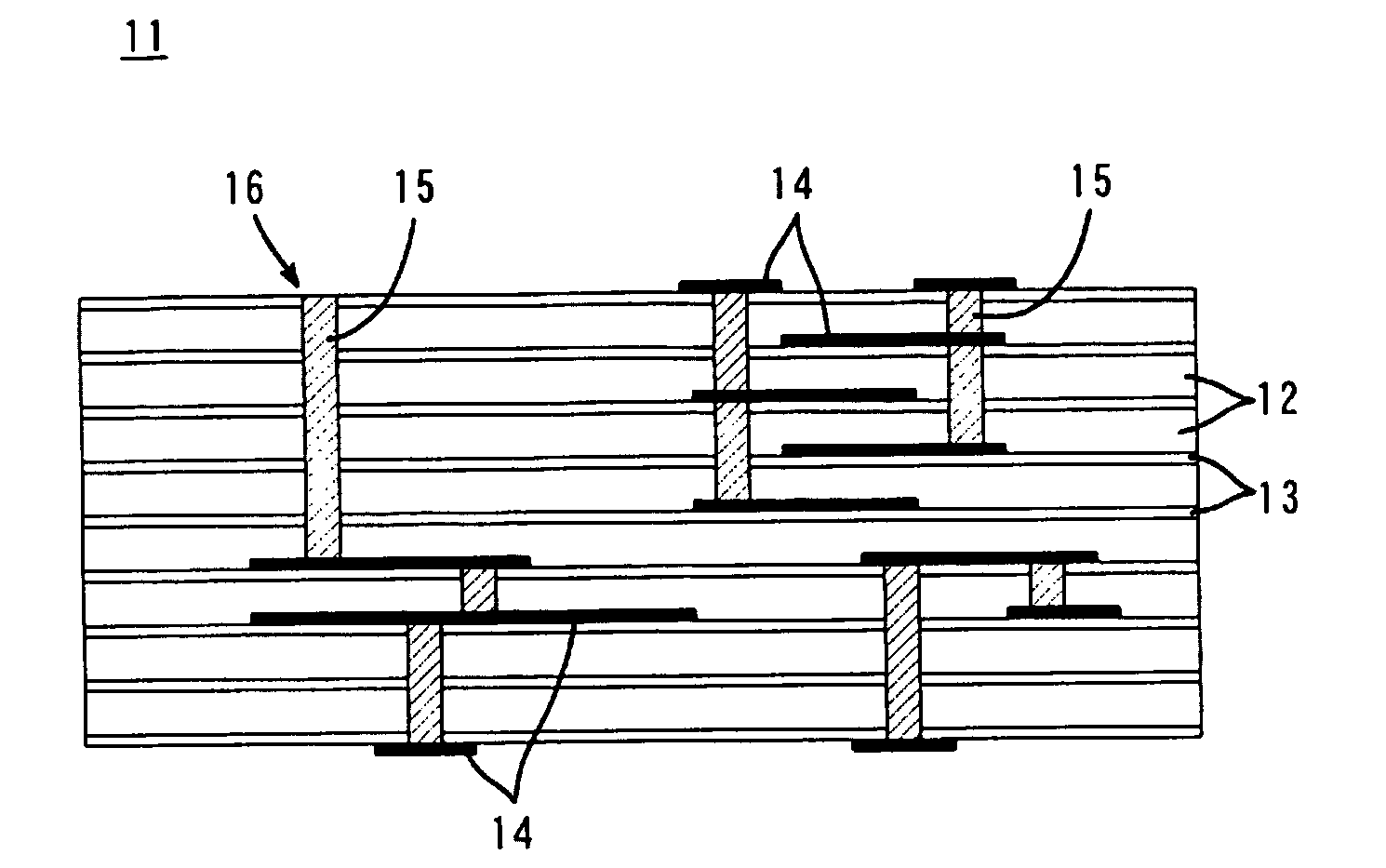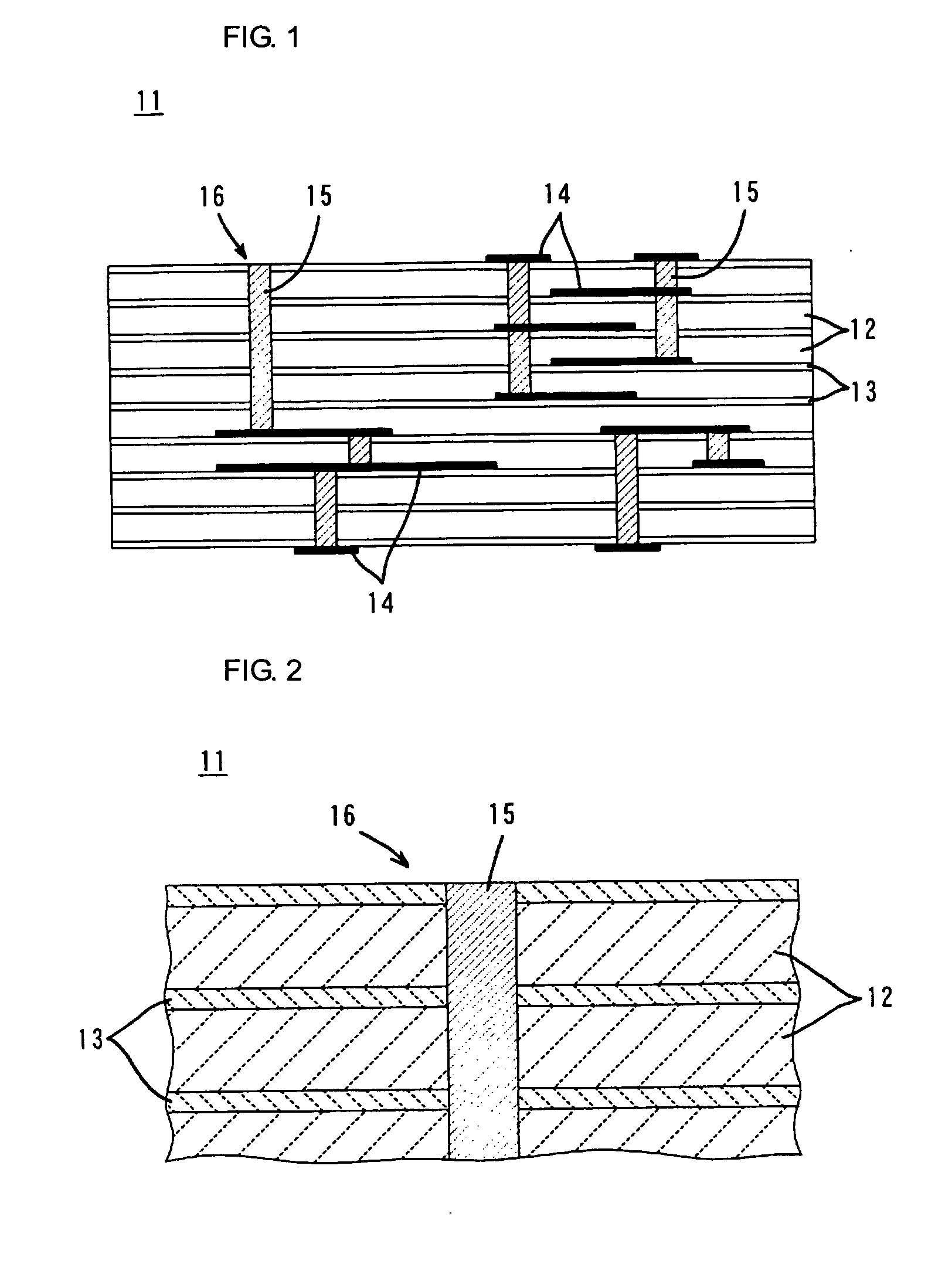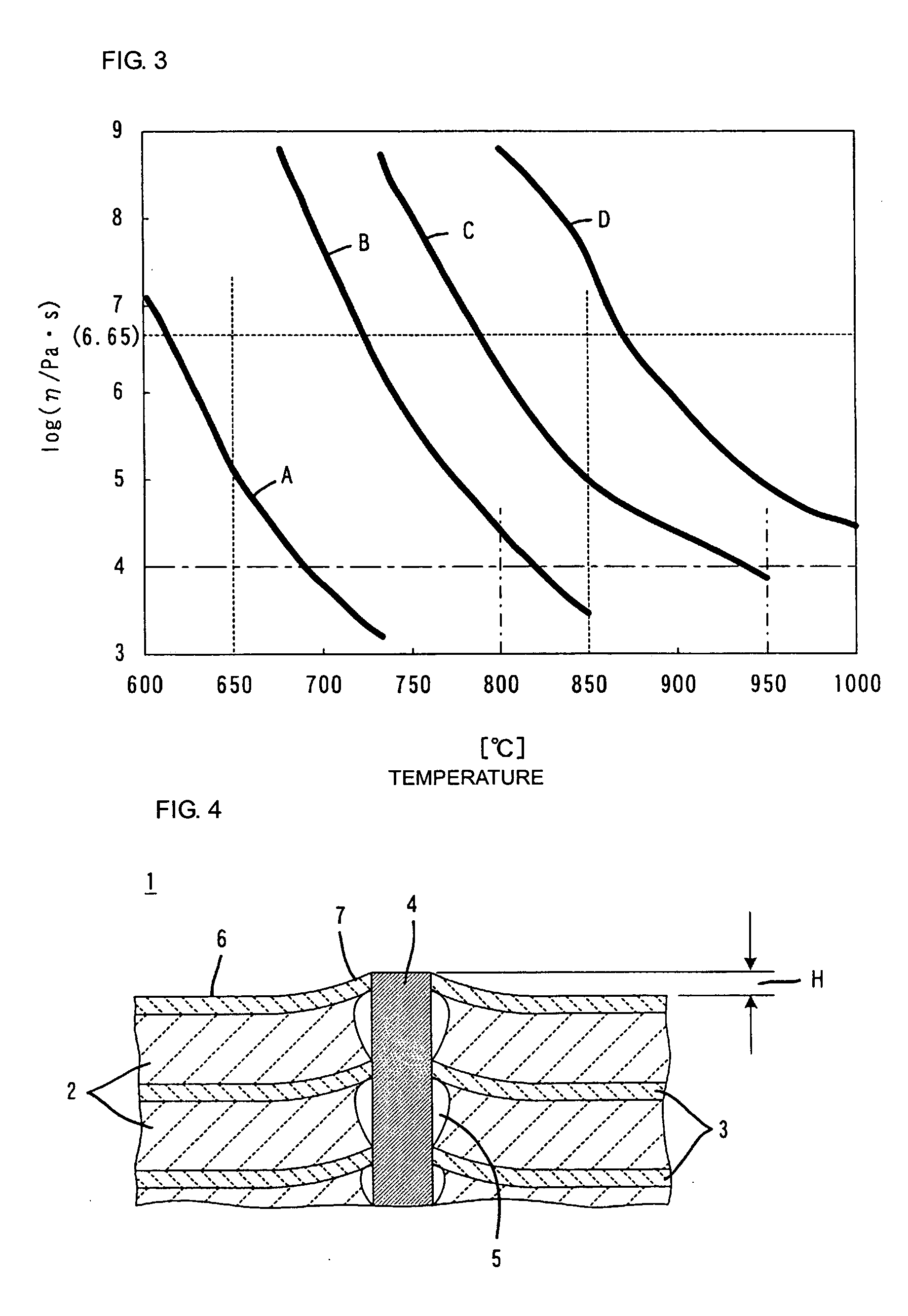Electrically conductive paste and multilayer ceramic substrate
- Summary
- Abstract
- Description
- Claims
- Application Information
AI Technical Summary
Benefits of technology
Problems solved by technology
Method used
Image
Examples
example 1
[0090] An electrically conductive paste composed of 82.0 percent by weight of alumina-coated copper powder, 4.5 percent by weight of glass frit composed of the glass B, and 13.5 percent by weight of organic vehicle was produced.
example 2
[0091] An electrically conductive paste composed of 82.0 percent by weight of alumina-coated copper powder, 4.5 percent by weight of glass frit composed of the glass C, and 13.5 percent by weight of organic vehicle was produced.
example 3
[0092] An electrically conductive paste composed of 76.0 percent by weight of alumina-coated copper powder, 4.0 percent by weight of glass frit composed of the glass C, 3.0 percent by weight of polypropylene powder, and 17.0 percent by weight of organic vehicle was produced.
PUM
| Property | Measurement | Unit |
|---|---|---|
| Temperature | aaaaa | aaaaa |
| Temperature | aaaaa | aaaaa |
| Percent by mass | aaaaa | aaaaa |
Abstract
Description
Claims
Application Information
 Login to View More
Login to View More - R&D
- Intellectual Property
- Life Sciences
- Materials
- Tech Scout
- Unparalleled Data Quality
- Higher Quality Content
- 60% Fewer Hallucinations
Browse by: Latest US Patents, China's latest patents, Technical Efficacy Thesaurus, Application Domain, Technology Topic, Popular Technical Reports.
© 2025 PatSnap. All rights reserved.Legal|Privacy policy|Modern Slavery Act Transparency Statement|Sitemap|About US| Contact US: help@patsnap.com



